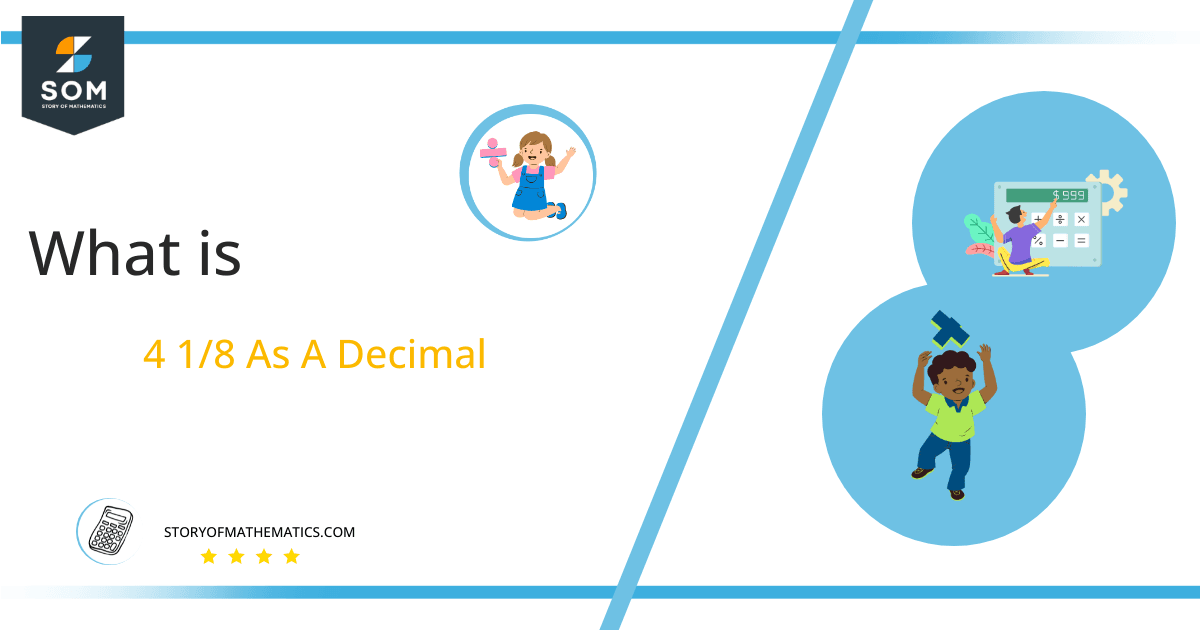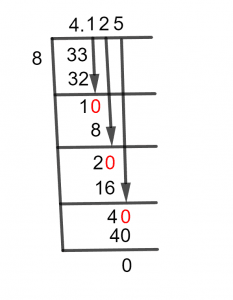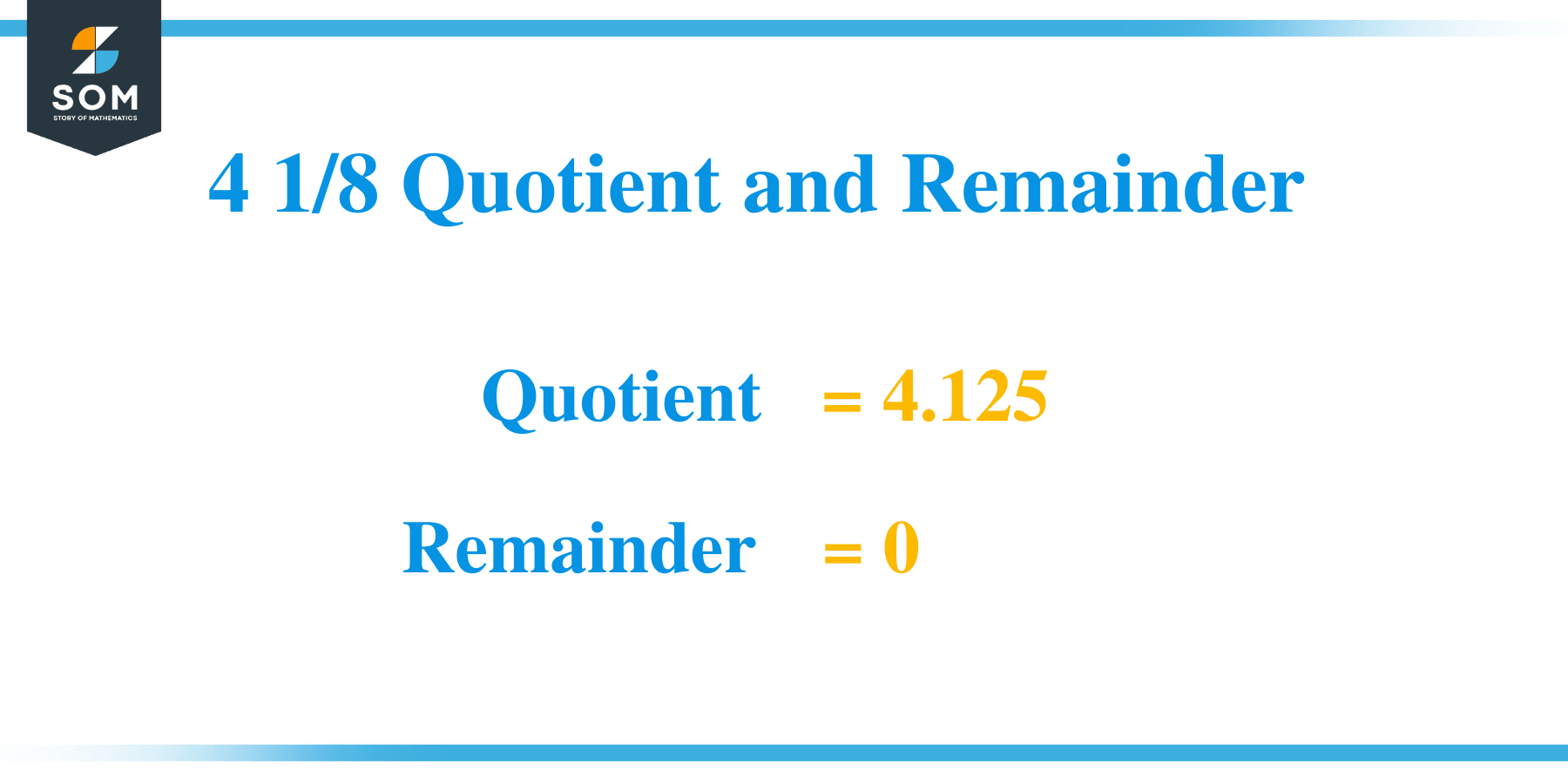What Is 4 1/8 as a Decimal + Solution With Free Steps
 The fraction 4 1/8 as a decimal is equal to 4.125.A fraction’s components are denoted by the Numerator, a number above the line or slash, and the Denominator, a number below the line or slash.There are three types of Fractions: mixed fractions, proper fractions, and improper fractions. Since fractions express the division of two integers, we have all experienced them at some point.When the numerator of a fraction is equal to or greater than the denominator, the fraction is said to be Improper. Similarly, when the numerator is smaller than the denominator, the fraction is said to have a Proper function. Mixed fractions are defined as a combination of a whole integer and a proper fraction.Let’s look at the solution of our fraction 4 1/8 to see how we can solve a division problem using a long division technique.
The fraction 4 1/8 as a decimal is equal to 4.125.A fraction’s components are denoted by the Numerator, a number above the line or slash, and the Denominator, a number below the line or slash.There are three types of Fractions: mixed fractions, proper fractions, and improper fractions. Since fractions express the division of two integers, we have all experienced them at some point.When the numerator of a fraction is equal to or greater than the denominator, the fraction is said to be Improper. Similarly, when the numerator is smaller than the denominator, the fraction is said to have a Proper function. Mixed fractions are defined as a combination of a whole integer and a proper fraction.Let’s look at the solution of our fraction 4 1/8 to see how we can solve a division problem using a long division technique.Solution
The provided fraction 4 1/8 is mixed. Before proceeding to the answer, it must first be converted into an improper fraction. To do so, first, multiply the denominator 8 by the whole number 4 and then add it to a numerator 1 to get an improper fraction. As a result of solving the mixed fraction, the incorrect fraction obtained is 33/8.Long division refers to the denominator of the fraction as the Divisor and the numerator as the Dividend:Dividend = 33
Divisor = 8
The result obtained after dividing is called the Quotient.Quotient = Dividend $\div$ Divisor = 33 $\div$ 8
Here, the fraction’s expression has undergone a complete transformation, and we are now prepared to solve this division using the Long division method:
Figure 1
4 1/8 Long Division Method
Before proceeding to division, 4 1/8 is reduced to an improper fraction, 33/8. Therefore, we will now carry the 33/8 division:33 $\div$ 8
The two numbers can be divided because the dividend is greater than the divisor.33 $\div$ 8 $\approx$ 4
Where:8 x 4 = 32
To get the remainder we subtract 32 from 33:33– 32 = 1
So, after the first iteration of division, we have a remainder of 1. Now 1 will be the dividend, and because 1 is smaller than the divisor, we will add a decimal point to insert an extra zero into the dividend. It multiplies 1 by 10.10 $\div$ 8 $\approx$ 1
Where:8 x 1 = 8
Again to get the remainder, we subtract 8 from 10:10 – 8 = 2
Now by Adding zero into the dividends right side, make it 20:20 $\div$ 8 $\approx$ 2
Where:8 x 2= 16
We are left with the remainder:20 – 16 = 4
Now we have a remainder of 4. Adding another zero to the dividend:40 $\div$ 8 =5
This results in zero as the remainder, reflecting the conclusion of the division procedure. As a result, the quotient of 4 1/8 is 4.125. Images/mathematical drawings are created with GeoGebra.
Images/mathematical drawings are created with GeoGebra.